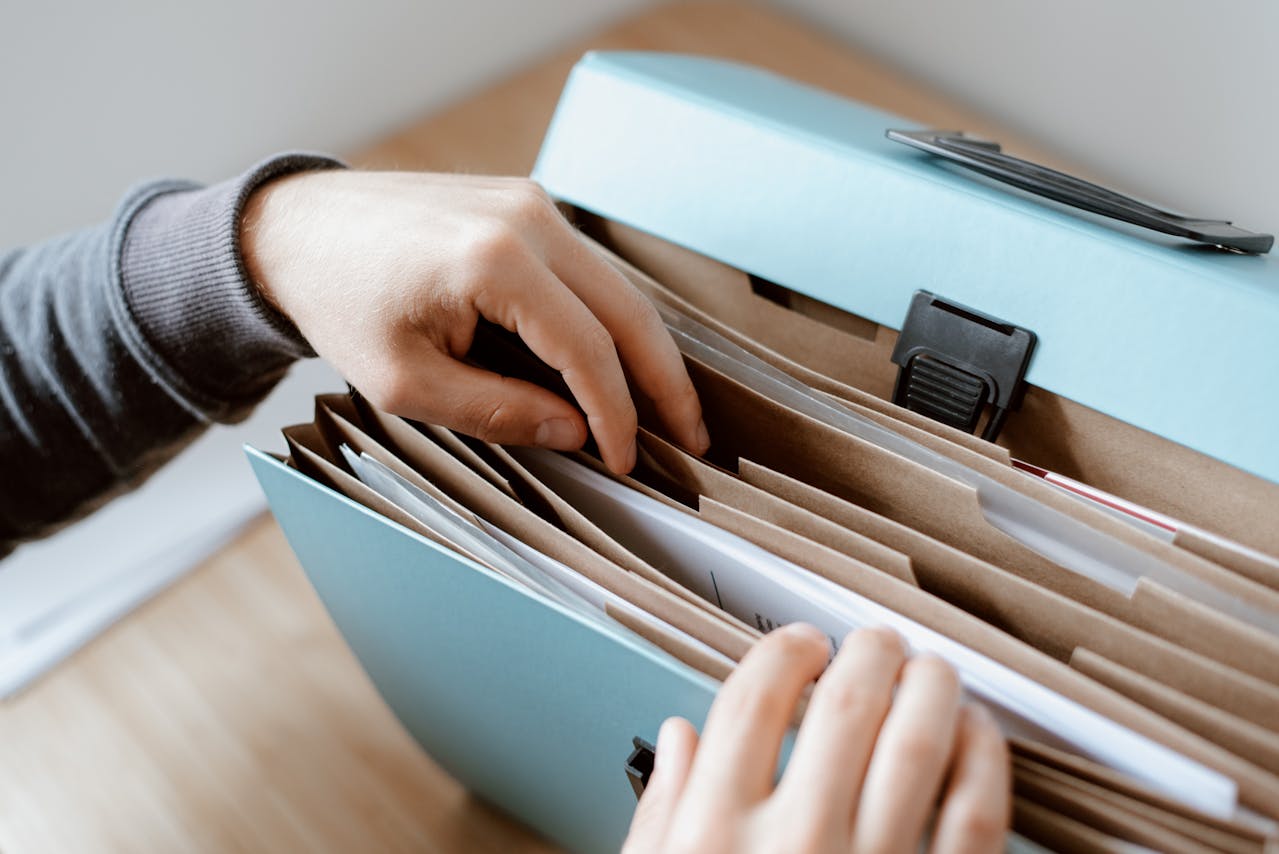Managing financial documents can feel like a hassle, but getting organized doesn’t have to be complicated. With just a few changes, you can create a system that saves time, reduces stress, and keeps important paperwork where you need it, when you need it.
Whether it’s bank statements, bills, tax forms, or receipts, most people deal with a mix of digital and physical files. If you’ve ever wasted time searching through a pile of unopened envelopes or clicking through random email folders, you’re not alone.
The good news is that organizing your financial information isn’t about perfection. It’s about creating a setup that makes sense for your daily life and is easy to keep up with.
Start with a System That Works for You
The first step is deciding whether you prefer a physical or digital setup, or a combination of both. Some people like having printed copies they can store in labeled folders or binders. Others prefer scanning everything and keeping it in cloud storage. There’s no single right answer; go with whatever feels easiest to maintain.
For example, if you pay bills by check or receive paper statements, you might want a folder for current payments and another for items you’ve already dealt with. You can add tabs by category, such as rent, credit card payments, or utilities, to keep things separated.
If you’re using spreadsheets to track your payments, consider adding basic details like the date, amount, and who it was paid to. For those still writing checks, it helps to have a detailed record of past transactions. That way, if a payment gets lost or delayed, you’ll know exactly where to look and have an easy way to find check number details.
This kind of simple tracking method becomes helpful if a payment ever gets disputed or a check isn’t cashed. You’ll have everything you need in one place, ready to review.
Know What to Keep and What to Shred
Not everything needs to be saved forever. Holding onto every receipt or bill can make your system harder to manage. The key is knowing what’s worth keeping.
Save tax returns and supporting documents for at least seven years. Keep loan agreements, insurance policies, and investment statements as long as they’re active. Store receipts for big purchases or anything that might be used as a deduction or proof of value.
On the other hand, things like utility bills, bank statements, and credit card summaries can usually be tossed after one to three years, unless you need them for a specific reason. Always shred anything that includes personal details, account numbers, or your Social Security number.
Label and Separate by Category
Once you’ve sorted what to keep, the next step is labeling. Whether you’re working with paper folders or digital files, giving everything a clear category helps you find what you need without digging through random piles or folders.
Start simple. Use broad labels like banking, taxes, insurance, home, and school. If you want to get more detailed, subcategories like “2023 tax forms” or “auto insurance policy” can help. Color-coded folders or tabs work well if you’re using a physical filing system. For digital files, try creating a master folder called “Financial Docs” and placing subfolders within it for each category.
Consistent labeling saves time later. It also makes it easier if someone else ever needs to access your records, like a tax preparer or family member helping with paperwork.
Use Cloud Storage for Digital Copies
It’s smart to back up your documents digitally. Even if you prefer paper, having a scanned version of key items gives you a second layer of protection. If your laptop breaks or you lose a physical file, cloud storage keeps your records accessible.
Apps like Google Drive, Dropbox, and OneDrive let you upload and organize files for free or at low cost. Just like with physical files, keep folders labeled clearly. If you scan receipts, use a naming format like “Date-Store-Amount” so they’re easy to search later.
Protect your files with a strong password and, if possible, two-factor authentication. Don’t rely on email inboxes or random downloads folders to store your important records long-term.
Set a Monthly Time to Review
Good organization isn’t about a one-time setup. It’s about keeping things in order regularly. Set a short monthly reminder to file new documents and remove what’s no longer needed. This habit takes 15 to 30 minutes and helps avoid piles that become overwhelming later.
During this time, you can also double-check for duplicates, update folder labels, or move inactive records to an archive folder. If you’re using both paper and digital systems, use this time to make sure both are current.
Monthly reviews keep your financial records accurate, tidy, and easier to manage year-round.
Keep Backup Copies of Key Documents
Some documents are worth backing up in more than one place. Items like your ID, passport, Social Security card, loan documents, and health insurance details fall into this category.
Keep one digital copy in a secure folder or encrypted drive. Then store a printed version in a locked drawer or fireproof safe. If something ever gets lost or stolen, you’ll have what you need to respond quickly.
If you move or travel frequently, having digital access to these files makes life easier. Just make sure the folders are clearly marked and updated anytime your information changes.
You don’t have to be perfect with paperwork. But having a basic system helps avoid stress and makes it easier to stay on top of things. When your financial documents are organized, you waste less time searching and feel more confident about what you have and where it is.
Start small. Pick one drawer, folder, or inbox to sort through today. Once you see how helpful a clean system can be, staying on track becomes much easier. A few minutes now will save you hours later.
